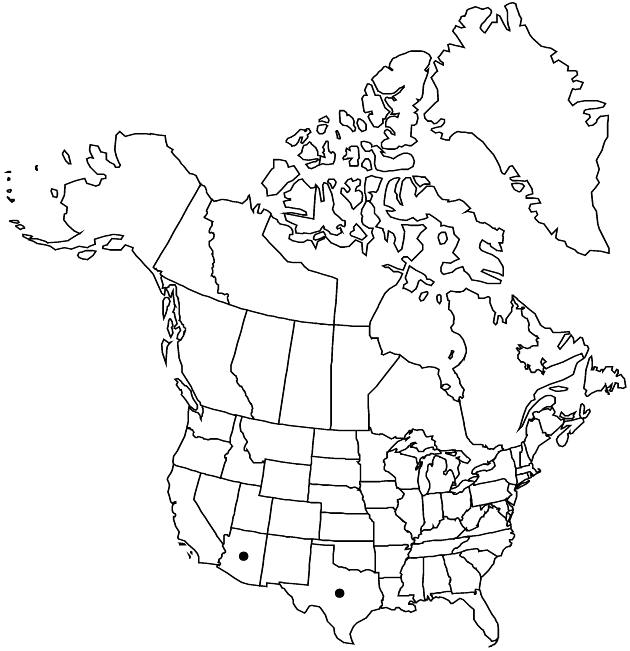Perityle microglossa var. microglossa
Annuals, 20–60 cm (stems erect or decumbent); usually copiously glandular-pubescent, rarely puberulent with scattered glandular hairs. Leaves: petioles 5–30(–40) mm; blades often turning purplish (variable in size and shape), cordate, ovate, or broadly ovate-cordate to subreniform, or subdeltate, usually 20–60 × 20–50 mm, margins singly or double crenate, even or irregular to strongly 3-lobed or cleft, pedately divided to subhastate (faces puberulent, glandular-puberulent, or glabrous). Heads borne singly or in corymbiform arrays, 3.5–4.5(–6) × 4–6.5(–7) mm. Peduncles 6–70 mm. Involucres campanulate. Phyllaries 14–30, narrowly to broadly lanceolate, 2.5–3 × 0.6–1 mm. Ray florets 5–13; corollas white, laminae oblong, 1.5–3.5 mm. Disc florets 40–100; corollas yellow, tubes 0.5–0.7 mm, throats tubular-funnelform, 0.5–0.8 mm, lobes 0.1–0.2 mm. Cypselae usually linear-oblong to linear-elliptic, rarely narrowly obovate, 1.5–2 mm, margins usually prominently calloused, ciliate; pappi of 2 unequal, antrorsely barbellate bristles 0.5–1.2 mm plus crowns of hyaline, laciniate scales. 2n = 68, 102.
Phenology: Flowering year around.
Habitat: Disturbed sites
Elevation: 0–1000 m
Distribution

Ariz., Tex., Mexico.
Discussion
The only known occurrence of Perityle microglossa from Arizona is the type of P. microglossa var. effusa (Santa Catalina Mountains, Pima County, 1882). Variety microglossa occurs as an introduced weed in extreme southern Texas and northern Mexico. Its shorter ligules and more glandular nature distinguish it from var. saxosa, which occurs only in Mexico. Cypsela and pappus characters, and distribution, distinguish P. microglossa from P. emoryi.
Selected References
None.